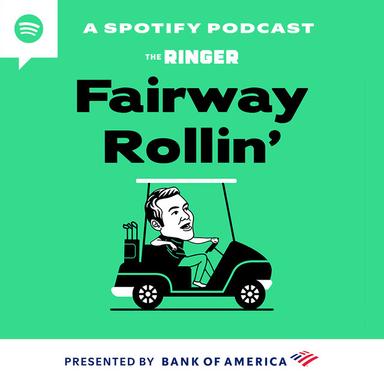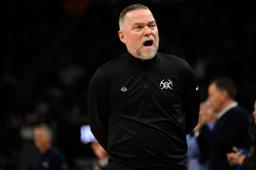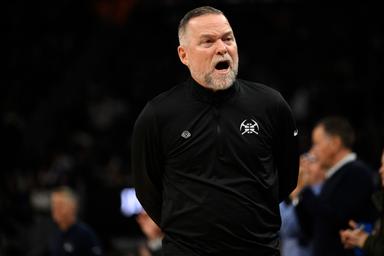
Wait? What's that you hear? The swaying of stately dogwoods? The cooing of suspiciously canned-sounding songbirds? Soft strings resolving beneath the dulcet tones of Jim Nantz? Electric-green grass for acres? The eerily calm churn of Rae's Creek? More pimento cheese than you could ever possibly want? That could mean only one thing: It's Masters week. And yet, with all the turmoil surrounding the game of golf, things feel a bit off. As more and more of the sport’s biggest news seems to revolve around secret boardroom meetings and cloak-and-dagger corporate negotiations, it’s hard not to feel that some of the magic of the season’s first major has been diminished. Professional golf and high finance have long been bedfellows, but when you are more likely to read headlines about geopolitics and competing investor groups than Rory McIlroy’s or Scottie Scheffler’s recent form, it’s fair to say the tail is officially wagging the dog. As we ramp up to Thursday morning's tee-off, here’s a primer on the state of the men’s game before its premier event.
1. What, exactly, is going on with golf?
Professional golf in general has spent the past few years largely in disarray. Long-simmering tensions between players and the PGA Tour over prize money, scheduling, personal license fees, and other issues came to a head starting in 2022 as a number of the tour's biggest stars signed up for a disruptor league called LIV Golf. The new tour was and is backed by the infinitely wealthy and deeply controversial Saudi Public Investment Fund, which has seeded hundreds of millions of dollars into sports like soccer, tennis, and golf. Such investments, known colloquially as "sportswashing," are largely intended to improve Saudi Arabia’s global standing, which has long suffered from its reputation for antidemocratic practices and human rights abuses. The strategy has proved profoundly effective, having functionally woven the Saudi kingdom into the most rarefied reaches of the sports ecosystem. Having poached huge names like Jon Rahm, Bryson DeChambeau, Brooks Koepka, and Phil Mickelson from the PGA Tour, LIV represents the PIF’s biggest swing yet. The question for the suddenly fractured and fractious golf world is: What comes next?
Three years into the LIV experiment, no one seems particularly happy with the breakaway league's progress. Television ratings are low to nonexistent, its much-touted "innovations"—teams, shotgun starts, three-round tournaments, and no cuts—have failed to gain much traction, and even some of the highly (preposterously) paid ex-PGA talent has started to get restless. Last week, the frequently surly Koepka opined that he wishes LIV were "further along," and rumors have circulated about Rahm's unhappiness with the breakaway tour almost from the time he signed. If that's the kind of backing that $500 million in guaranteed contracts gets you from your biggest stars, you might be in some real trouble. No wonder the PIF seems eager to consecrate a potential merger as soon as possible. The Saudis may be able to run their money faucet indefinitely, but credibility is proving to be harder to purchase than they imagined.
2. Wow! That sounds complicated. How are the leagues currently coexisting?
It definitely is complicated. At first the PGA Tour (and its European equivalent, the DP World Tour) adopted a war footing, banning LIV defectors from playing in PGA events and challenging the legality of poaching players in court. Superstars like Tiger Woods and McIlroy presented themselves as hardcore PGA loyalists. There was something of a united front led by PGA Tour commissioner Jay Monahan. Then the legal bills started coming in and it became clear that whatever sized war chest the PGA Tour had on hand could never survive a multiyear struggle with the Saudis in the courts. They'd be bankrupt within a decade. So in 2023, in a shocking development for players on every tour, the PGA, DP World Tour, and LIV agreed to a framework plan to merge into a single entity. This was both a startling outcome and a predictable one. Persian Gulf money in sports has proved too formidable a force to override. Even by the standards of sports and big business, it is difficult to overstate the level of duplicity at work here. As the PGA Tour was actively encouraging its players to take a public stance against LIV—McIIroy was particularly principled and militant about not wanting to take blood money for golf—its major power brokers were busy cutting a deal behind the scenes.
McIlroy was understandably enraged and humiliated. “It’s the twist from ‘Psycho,’” one longtime observer told The New Yorker. “You’re, like, ‘What?!’ And then you’re, like, ‘Yeah, that scans.’” (I was the longtime observer.) They say in politics that if you want a friend, get a dog. If you are looking for scrupulousness in your sports, I would suggest looking in just about any other direction besides men's golf.
3. Since the initial framework for the merger was agreed upon in June 2023, the negotiations have been ongoing and, by every apparent metric, unproductive. What is happening?
The short version is that, save for the few people in the room, nobody really knows for sure. It seems safe to infer that the most polarizing sticking point has been the PGA Tour’s desire to see the Saudis fold up the tent on the LIV tour and fully reintegrate its dissident superstars back into the PGA Tour. The Saudis don’t want to do that—they believe, against any available evidence, that LIV will catch on eventually. There is also considerable jostling over which entity will exert more control over the game moving ahead. The Saudis would like to install PIF’s governor, Yasir Al-Rumayyan, as cochair of PGA Tour Enterprises, which appears to be a nonstarter for the time being. It all amounts to a confusing and seemingly intractable standoff. PIF has the deeper pocketbook by far, but the PGA’s built-in audience and long institutional history cannot be replicated simply by throwing money at the problem. Then there are potential legal and regulatory hurdles. In 2023, after the merger was announced, the U.S. Senate suddenly got interested in exactly what all of this foreign investment means for the PGA’s homegrown product, and it held hearings to explore, among other things, whether the merger constituted a monopoly. Nobody involved is particularly excited about that level of scrutiny moving ahead.
4. OK, but what if a bunch of American billionaires invested in the tour? That would change things, right?
It would, and it has. The Strategic Sports Group—a powerful consortium of American business magnates, including Boston Red Sox owner John Henry and Atlanta Falcons owner Arthur Blank—emerged in 2024. Their investment of $1.5 billion in the rebranded PGA Tour Enterprises in return for a 12 percent overall stake seemed to considerably strengthen the tour’s negotiating position with the Saudis, especially with an additional $1.5 billion promised at an unspecified future juncture. With a second behemoth in the room, the chances of a full Saudi takeover feel significantly diminished.
5. Great! So problem solved, right?
Kind of, but no. Preferable as it may be to the PIF, the SSG provides a host of problems for PGA Tour Enterprises moving forward. A little birdie with firsthand knowledge of the tour’s inner workings tells me that SSG is already effectively running the show. It’s also brought a Wall Street slash-and-squeeze approach to the role, pushing for cost-cutting measures worth tens of millions of dollars while actively resisting proposals to spend any of its own $1.5 billion to capitalize tour assets or grow the game. Meanwhile, SSG gets paid millions in management fees and raked in millions more in cash distributions from the tour in 2024. The arrangement, the insider tells us, has left many wondering whether SSG is really here to save golf or just wring every dollar from it before it’s destroyed.
6. So it’s not just there for the good of the game?
Would that it were so simple. In fact, some of SSG’s practices could be placing the tour in the crosshairs of a financial peril nearly equivalent to battling the Saudis in court. PGA Tour Enterprises currently benefits from tax status as a 501(c)(6) nonprofit organization, exempting it from federal income taxes. Our source says the tour has been warned that SSG’s outsize role and corporate raider mentality could threaten that status—which would put the tour on the hook for tens of millions in tax payments. We also hear it could put the players’ retirement fund at risk. That might sound like small stakes for the tour’s biggest winners, but for the rank-and-file PGA players barely holding on to their tour cards, the reality is anything but.
7. What’s this I hear about PGA Tour commissioner Jay Monahan getting canned?
In what is probably the most alarming example of SSG commandeering PGA Tour Enterprises, it apparently engineered a secret exit strategy for current PGA Tour commissioner Jay Monahan. According to the source, a small SSG “advisory committee” negotiated a platinum parachute for Monahan that would pay him close to $100 million in cash and retirement benefits to leave the tour in the coming months. The deal also reportedly narrows his noncompete so that he can continue to work in sports and broadcasting.
8. So much intrigue. But what does any of this have to do with Donald Trump?
Golf is central to Trump’s image. He's long bragged about his acuity for the game and sought to commingle his brand with professional golf. But his experience with the PGA Tour has been mixed at best. In 2016, the PGA moved an event scheduled to be played at his course in Doral, Florida, to Mexico City coincidentally after Trump (then a presidential candidate) disparaged Mexicans on the campaign trail—a slight he certainly hasn't forgotten. Trump is also close with the Saudis and eager to place a thumb on the scale of the ongoing merger negotiations. But who knows anything about the current president? Unpredictability is his brand. Monahan was recently spotted meeting with Trump at the White House—could he have been auditioning for his next gig?
All kidding aside, within golf’s bizarro world, at this juncture, Trump is liked and trusted by many of the game’s biggest superstars and its major power brokers. Tiger Woods, a pivotal figure in ongoing negotiations, has visited the White House on multiple occasions since Trump took office for his second term, and even Rory—the rare player willing to go on the record opposing Trump politically—has expressed enthusiasm for the president’s potential role in breaking the stalemate. The fact that none of this has made any difference so far speaks to the extent of the impasse.
9. Well, that was very edifying. Let’s talk about the tournament. What should I be watching?
You’d have to start with McIlroy, the great Northern Irish superstar, who will look once again to complete the career Grand Slam this week. The 35-year-old is both a sentimental pick and one of the oddsmakers’ favorites: He’ll arrive in fine form, having won two of his past five starts, including the prestigious Players Championship in March. He’s frequently been a dominant force on tour but somehow hasn’t won a major in 10 years—almost inexplicable for a generational talent who bagged four by the age of 25. A win this week would be cathartic on several levels, an all-time green-jacket moment.
10. OK, I’ll watch Rory. What’s the second-biggest story?
That would be the defending champion Scottie Scheffler, who also won the green jacket in 2022 and has spent most of the past couple of calendar years on an ungodly heater. In 2024 alone, he won nine events in 23 starts, with 17 top-10 finishes and an Olympic gold medal to boot. That’s verging on some prime Tiger Woods shit. He’s only 28, he’s the betting favorite, and if he manages a third Augusta triumph, we’ll start talking about him in the hallowed terms of his fellow Texan Lee Trevino.
11. Could any of the LIV guys win? Would that be weird?
Oh, most definitely, on both accounts. One of LIV’s poached stalwarts could certainly swoop in and bring the green jacket back to the disruptor tour, and that absolutely would make many people uncomfortable. The big three to watch for are big men indeed: Brooks Koepka, Bryson DeChambeau, and Jon Rahm. They can all hit it a mile—always a huge advantage at Augusta National—and all have major pedigrees. Rahm dominated the course during his 2023 triumph, and Koepka has finished in the top 10 in three of the past six years. Big Time Bryson has been fantasizing about driving Augusta’s par-5 13th for years but also demonstrated a tender finesse when winning last year's U.S. Open with a bunker shot for the ages. Both Brooks and Bryson have proved that players competing on the LIV tour can still win majors, but seeing one of the dissidents being fitted with a green jacket in Butler Cabin would represent a cringey sea-change moment between the old guard and the nouveau riche. I so love The Real Housewives professional golf. As for dark horses, keep one eye on the salty 45-year-old Spaniard Sergio García, who won here in 2017 and has the capacity to catch fire when his head and his game are both in the right place. And, dare we say it, 54-year-old three-time Masters champion Phil Mickelson is always capable of being a threat at Augusta National. Just check out Lefty’s runner-up finish from out of nowhere in 2023. The course just suits him, and man alive, what a Sunday story line that would be.
12. Any other contenders to watch?
Keep an eye on Collin Morikawa this week. Everything about the 28-year-old Californian feels freighted with destiny. He already won the 2020 PGA Championship and the 2021 Open Championship. He finished fourth at the 2021 U.S. Open and third at last year’s Masters. You know what I’m saying. Morikawa is the type of player who might soon enough be in the conversation for the career Grand Slam—that rarefied air reserved for Tiger, Nicklaus, Gene Sarazen, Gary Player, and Ben Hogan. Those are big names! He hasn’t won an event since 2023, but his recent form has been strong, including a second-place finish at Bay Hill and a top-10 placement at the Players Championship. Morikawa’s chances will likely come down to his streaky putter, a weakness that Augusta National’s lightning-fast greens will thoroughly expose if he isn’t feeling it. But Morikawa just feels like a future Masters winner. More than that, he is the same age as Scheffler, and the two of them seem ripe to engage in a late-millennial update to storied rivalries like Nicklaus-Watson and Woods-Mickelson. Golf thrives on story lines like that. Scheffler already leads, two green jackets to zero. Morikawa could narrow the deficit this week. Other names to watch: Cameron Smith, Cam Young. (The Cam Young preoccupation—is obsession too strong?—runs deep in Ringer circles.)
13. What other random things should I be looking out for?
For all the Sturm und Drang, it’s still the Masters, and it will still be fun. The fun won't include Tiger, who is recovering from surgery for a torn Achilles, the latest in a seemingly endless string of injuries that appears likely to keep him from ever competing again at golf’s highest levels. (That didn't stop Tiger—the inimitable scamp—from playing an April Fools’ Day prank by posting on social media that he had miraculously recovered and would tee it up this week. This guy.)
Augusta National heavily favors certain styles of play, which accounts for its many repeat champions. Two of those to pay attention to are 2021 winner Hideki Matsuyama and 2015 winner Jordan Spieth. Matsuyama at his ball-striking best and Spieth with a hot putter are both more than capable of returning to the winner’s circle.
Twenty-six-year-old Australian Min Woo Lee just won his first PGA event at the Houston Open in March, holding off Scheffler in the process. Fun fact: His older sister, Minjee Lee, is a major champion on the LPGA tour.
Former major champion Jason Day has promised to “tone down” his wardrobe after raising hackles among the notoriously conservative Augusta National membership by demonstrating significant sartorial swagger at last year’s event. Will he? Let’s hope not.
For a few years, it looked like the 28-year-old American Will Zalatoris might break through to become yet another emerging star of the Scheffler-Morikawa generation. Injuries have been a constant menace since then, and he enters the Masters as a massive underdog. Though he’s apparently healthy, his once-promising career seems to be hanging in the balance. Let’s hope for good results.
Tom Kim and Patrick Reed are both possibilities to contend this week. But they will DEFINITELY contend for the most over-the-top reaction to making a putt. The game within the game.
The stalwart German and two-time Masters winner Bernhard Langer will make his final start this week. He's made an incredible 27 cuts in 40 appearances. Look for the impossibly cool 67-year-old to make it 28 in his last ride at Augusta National.
And finally, sweet-swinging 1992 Masters champion (and former Jim Nantz roommate!) Fred Couples will make his 40th appearance. One of golf’s true nice guys and the oldest man ever to make the cut, two years ago, at age 63. Golf is the rare sport where the greatest players from multiple generations get to share the field of play in a non-exhibition context. Masters rules stipulate that former champions can enter the tournament as long as they’re above ground, and many hang on for too long. Couples is unlikely to do that, so enjoy him while you can.
14. Who will win?
It’s Morikawa’s time. Book it.





